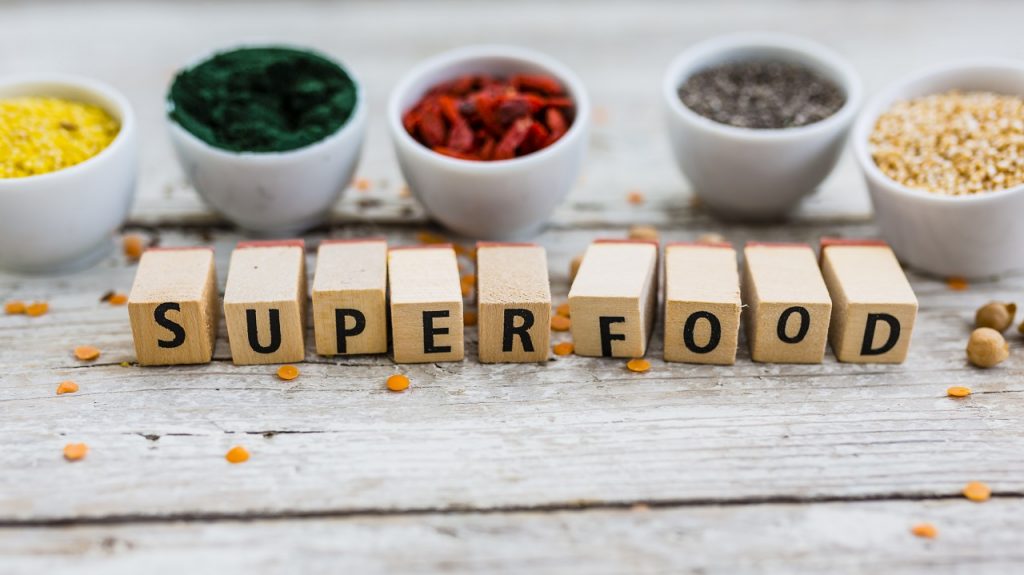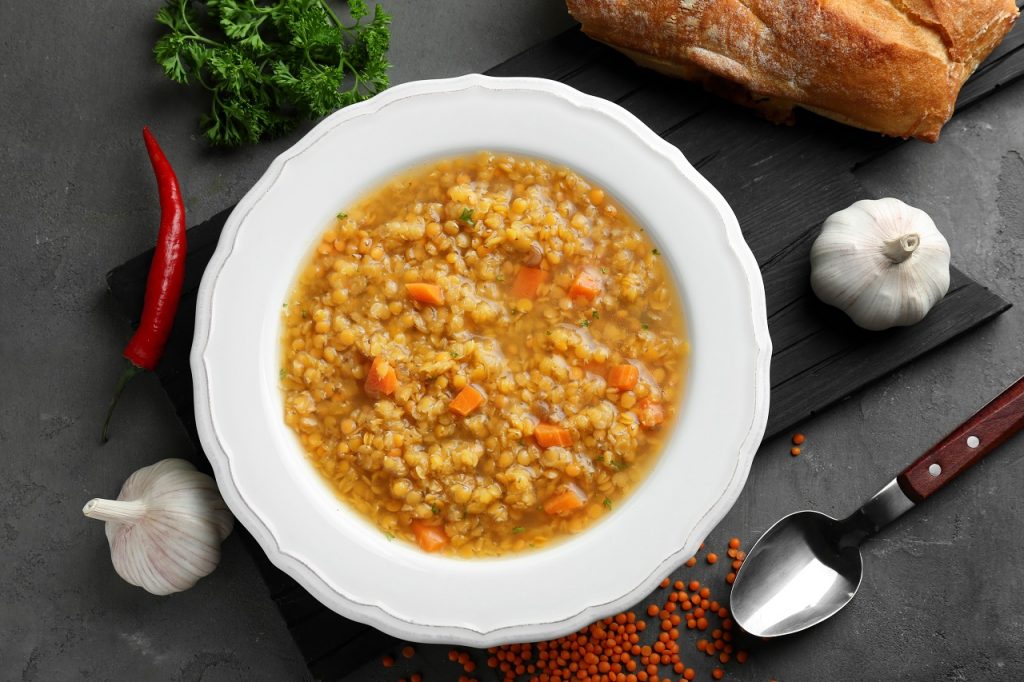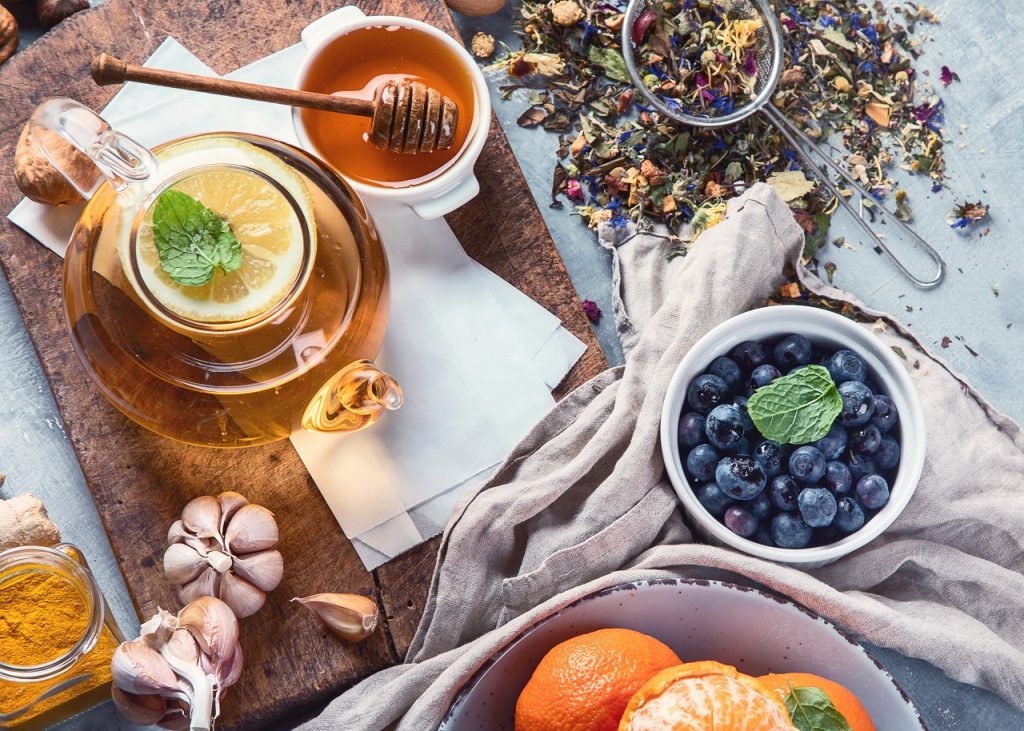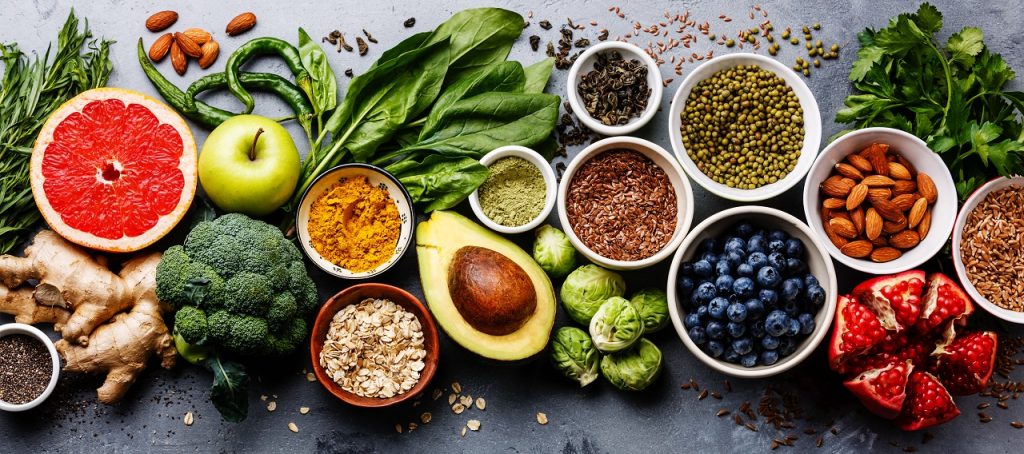
If you check from a nutritional perspective, there is no such thing as superfoods. While this was a term used for marketing purposes to influence food trends, there is no denying the positive effects that some of these foods have on the body. The term “superfoods” is used to describe a food that is rich in a particular nutrient or other bioactive substances. Superfoods are steadily joining the wagon in India due to their numerous health benefits.
Here are 5 foods that may be worthy of the esteemed superfood title.
1. Indian Gooseberry (Amla)
It has a sour, astringent taste and sweet aftertaste. It is one of the richest sources of vitamin C (approx. 600-700mg per fruit). Along with antioxidants and immunity-boosting properties, it also has anti-ageing, anti-cancer, anti-diabetes properties and it also reduces menstrual discomfort. It is rich in pectin, a dietary fibre that regulates bowel movement and also treats scurvy. Amla powder is used in many hair tonics as it enriches hair growth, maintains hair colour, and improves lustre. It is also available in various other forms such as powder, juice, oil, tablet and spice. Click here to know more about the Indian Gooseberry!
2. Fenugreek Seeds
As demonstrated in various studies Fenugreek is rich in fibre and protein. Due to its valuable bioactive components, it has an anti-diabetic effect, it is loaded with antioxidants, and it is anti-carcinogenic, hypo-glycemic and has a cholesterol-lowering effect as well. It reduces weight and obesity, treats constipation and also acts as a Galactagogue i.e. it improves milk production in breastfeeding mothers. Fenugreek should be included in our daily diet. It can be used while cooking curries, vegetables, dals, and parathas, etc.
3. Garlic
The health benefits of garlic are numerous. These include anti-cancer, antibiotic, anti-hypertensive and cholesterol-lowering properties. It is also anti-diabetic, antioxidant, antimicrobial, immunomodulatory, anti-asthmatic. Garlic needs to be peeled, chopped or crushed and then consumed to activate its main component. It is also a source of prebiotics. Studies indicate that eating 2 cloves of garlic lowers cardiovascular disease risk. To know more about the benefits of Garlic, click here!
4. Green Banana Flour
It is made by drying unripe green bananas and grinding them into a fine powder. It has a mild nutty taste and has resistant starch which is undigested, thus beneficial for colon health and also aids digestion. It is gluten-free and can be substituted for wheat flour. It is ideal for weight watchers as it keeps the tummy full for a longer time. This prevents binge eating. As green banana is low in sugars, it is also diabetic friendly. It contains numerous vitamins and minerals.
5. Moringa / Drumstick
A highly overpriced superfood in the west, it grows abundantly in India. It is used mostly in sambhars, curries and cooked vegetables, both in rural and urban areas. WHO (World Health Organization) promotes this as an alternative food source to treat malnutrition. Moringa leaves are rich in minerals such as calcium, potassium, zinc, magnesium, iron and copper. Thus, it helps in treating anemia and boosts immunity. A single serving of Moringa contains about 3x the iron of spinach. Iron is essential to enriching the blood, energy and oxygen in our muscles and organs. It also works as a Galactagogue i.e. helps in inducing milk. It is highly recommended for pregnant women. 1 tsp of Moringa powder added to water or the leaves cooked into a vegetable or the drumsticks inner pulp consumed, can begin the process of adding health and nutrition to your life and everyone around.
These easily available superfoods can add to your health and well-being! Do consult your doctor before trying any of these foods to avoid allergic reactions, especially if pregnant.
We hope this article helps you! Leave your thoughts in the comments below! For more informative articles such as this, check out Healthy Reads or you can get this information directly from a GOQii Coach by subscribing for Personalised Health Coaching here.
#BeTheForce
 Whether you’re a confident cook or a kitchen newbie, a little advice is always helpful. So, here I am with these need-to-know soup-making tips and techniques to make your soup healthy and nutritious. Soups make an excellent choice for snacking, a light dinner recipe or post workout meal. You can easily fit it in your meals in various ways.
Whether you’re a confident cook or a kitchen newbie, a little advice is always helpful. So, here I am with these need-to-know soup-making tips and techniques to make your soup healthy and nutritious. Soups make an excellent choice for snacking, a light dinner recipe or post workout meal. You can easily fit it in your meals in various ways. “Superfoods” are foods that have a substantial amount of nutrients and very few calories. They contain a high volume of minerals, vitamins, and antioxidants. But, do winter superfoods really exist?
“Superfoods” are foods that have a substantial amount of nutrients and very few calories. They contain a high volume of minerals, vitamins, and antioxidants. But, do winter superfoods really exist?  Anything that sounds fancy won’t necessarily benefit our health. Lately, the word “Superfoods” must have appealed to you all. Well, what exactly are Superfoods? Why do we call them Superfoods? Though there’s no scientific definition, as per the dictionary, the definition of superfoods is “a food considered exceptionally good for one’s health and for boosting the immune system owing to its naturally high content of vitamins, minerals, fiber, antioxidants, or omega-3 fatty acids”. So basically, superfoods offer a dense concentration of nutrients with small quantities of food.
Anything that sounds fancy won’t necessarily benefit our health. Lately, the word “Superfoods” must have appealed to you all. Well, what exactly are Superfoods? Why do we call them Superfoods? Though there’s no scientific definition, as per the dictionary, the definition of superfoods is “a food considered exceptionally good for one’s health and for boosting the immune system owing to its naturally high content of vitamins, minerals, fiber, antioxidants, or omega-3 fatty acids”. So basically, superfoods offer a dense concentration of nutrients with small quantities of food. 


